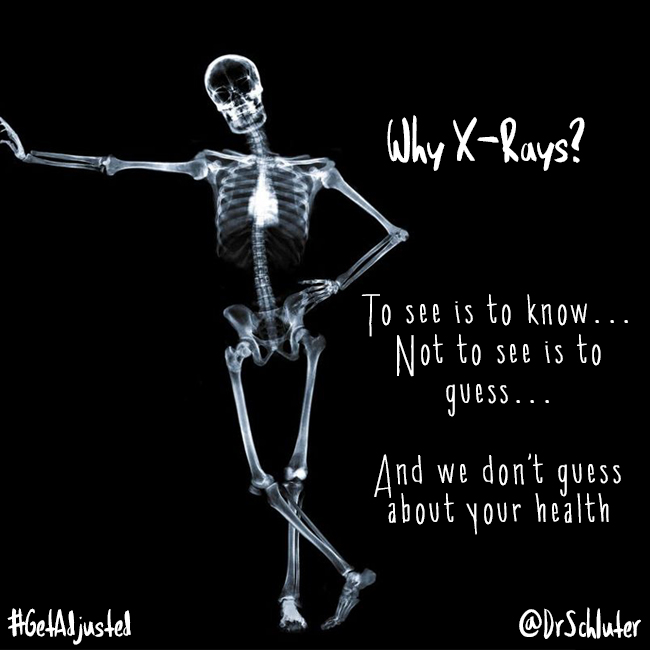Have you every wondered why we take x-rays or if they are even necessary? It’s a very reasonable question to ask and one that we are always happy to answer. In most areas of health care, like dentistry or orthopedics, x-rays are common, routine and usually performed without any doubts or questions. Patients understand that x-rays are an integral part of diagnosing a problem and that without them the dentist or orthopedic surgeon would essentially be guessing and this would lead to the quality and safety of the procedure being compromised.
However, when it comes to chiropractic, the use of x-rays has somehow become debatable. In fact, there are many chiropractors that don’t take x-rays as a standard practice. So when a patient enters our office and discovers that x-rays are a standard practice for all cases, they might naturally have a few questions.
For the most part, the questions raised by patients are out of a fear of receiving too much radiation and increasing their health risks. It makes since to have this type of concern, we know that excessive exposure to ionizing radiation, like x-rays, can increase the risk of cancer. However, when patients understand the actual dosage they are receiving along with the clinical need for x-rays, their concerns are quickly dispelled.

First, let’s address the health risk. What many patients don’t know is that most people will receive more exposure to x-rays in their lifetime simply by being outside then they ever will from getting x-rays at a doctors office. X-rays are another form of radiant energy similar to light or radio waves, however x-rays have the ability to penetrate through the body. They are actually all around us in the form of background radiation that naturally occurs in nature. This is found most commonly from Radon and other radionuclides we eat, drink, or breathe but also from radiation in the soil/rocks and cosmic radiation. So we are almost constantly exposed to x-rays at some level. This level of exposure is often measured in millisieverts (mSv).
The damage caused by x-rays is like a wound in the sense that, with time, the body can fully heal and recover. So a large dose of radiation from x-rays, such as from a CT scan, can be tolerated as long as it’s not too frequent. And a small dose of x-rays can be tolerated on a more frequent basis. To put things in perspective, a chest x-ray exposes a person to 0.1 mSv, which is equivalent to the amount of radiation exposure they would experience from their natural surroundings in 10 days. A CT scan of the abdomen and pelvis will expose a person to 10 mSv, the same as 3 years of natural background radiation.
It has been estimated that individuals in the United States receive about 6.2 mSv on a yearly basis from all sources of radiation. The x-rays that we typically take at our office are called full spine, meaning we are getting a view of your entire spine from the front and from the side. This set of x-rays usually exposes a person to 2 mSv. This means you will be exposed to more radiation just from walking outside than you ever will from getting x-rays in our office.
So, why do we need to take x-rays of you spine? Much of the reason comes from how we analyze the spine and the fact that we want to know as much as possible about it before we begin to make specific corrections to it. As Gonstead doctors, we only want to treat the area of the spine that needs to be treated so that our efforts effect only those areas that need the help, x-ray helps us narrow the search so that our adjustments are very precise. They enable us to visualize the entire structure of your spine, which is extremely helpful when evaluating posture, joint and disc integrity, and vertebral misalignments. X-rays also help us in ruling out any pathologies, or recent fractures that may be present or contributing to the your condition. You might be surprised how many secondary issues we have uncovered unrelated to a patients primary complaint, simply because we took x-rays.
Just as an orthopedic surgeon or dentist needs x-rays in order to perform his or her job and provide the highest quality of care to the patient, so do Gonstead doctors. We would rather know than guess.





